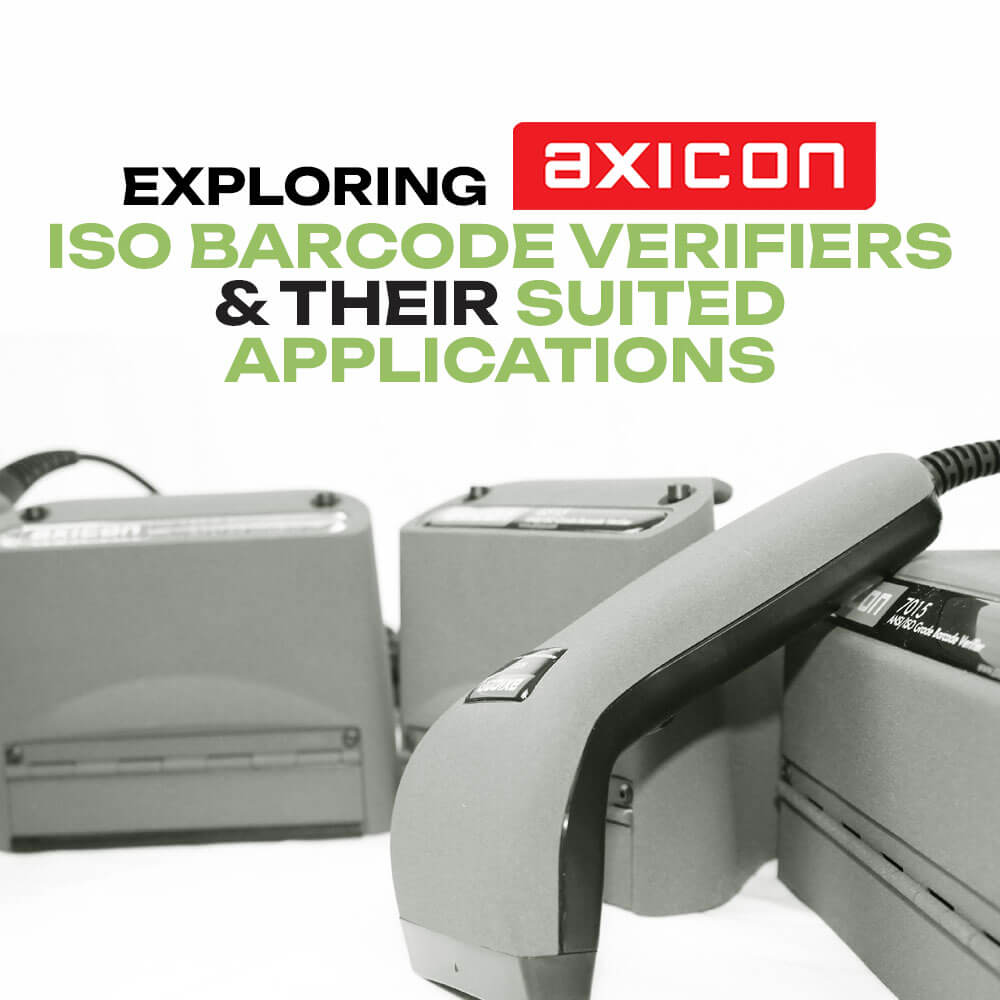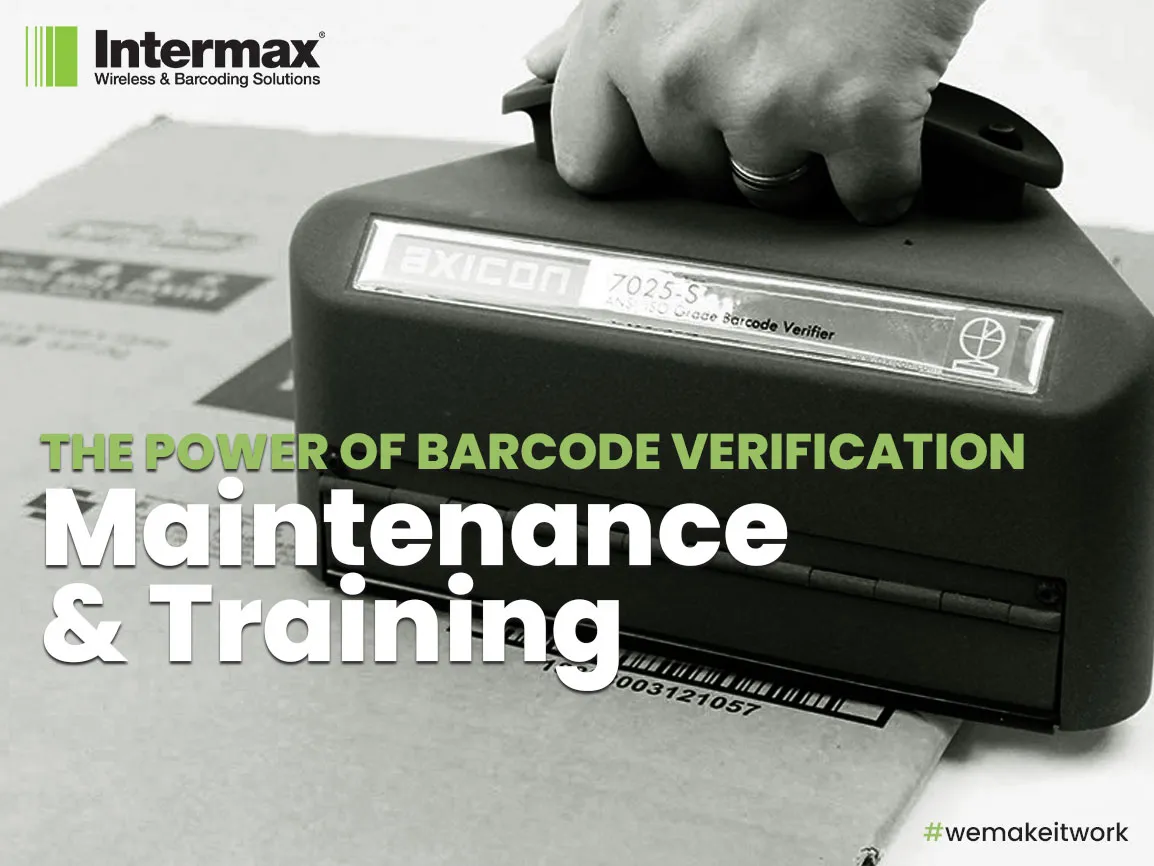How To Use Barcode Verifiers
Isn’t a barcode verifier the same thing as a barcode scanner?
Though this is a common mistake, barcode scanners and barcode verifiers do very different things. And these differences are important.
Keep reading to learn more about barcode verifiers and why they are such a necessary part of your industry.
What Is A Barcode Reading Error?
There are two types of barcode reading errors.
The first has to do with poor image quality. Because you can often see this error with your own eyes, it is not difficult to catch. You don’t need a barcode verifier to pick up most poor quality errors, but you do need the help of a verifier to find the next kind of error.
This error involves flawed data quality. Verifiers can test the barcode for data structures and can alert you of any data problems.
But why is this important?
Barcode verifiers compare a barcode quality, data, and structure with international and industry standards. Depending on the states of these qualities, the barcode is given either a passing or failing grade.
This allows the operator to find out about any defects in the barcode. The errors can then be addressed and corrected during the next printing process. Because many industries use barcodes, they all require barcode verification.
How Does A Barcode Verifier Help?
When a barcode isn’t verified in the correct manner, it can lead to problems like manufacturing errors and even production downtime. So using a barcode verifier allows you to keep a high standard of quality control in your business.
With the feedback you get from a barcode verifier, you can better control the barcode quality process. This will enable the direct part marker or label Printer are working they way they should and makes sure the barcode will still be readable when they make their way along the supply chain.
Most industries need barcode verifiers to reach required standards. There is no other way to ensure barcode quality.
Verifiers can ensure a barcode scans correctly the first time. This reduces the chance of missing mistakes, which can cause industries to pay major fines to other retailers.
If you don’t use a barcode verifier, you may have to input the barcode data manually. This opens it up to human error. Barcode verifiers make sure none of these mistakes happen. It keeps the quality control high and improves customer satisfaction.
Why Can’t A Barcode Scanner Do The Same Thing?
Many people think a barcode scanner can do the same thing as a barcode verifier. But this simply isn’t true. You can’t verify anything with a barcode scanner.
So what’s the difference between the two?
A barcode scanner reads barcodes. That’s it.
Scanners also can’t recognise the quality of a barcode. Whereas a verifier can decode, measure, and check the format of a barcode, a scanner can only read them. A verifier lets you know which barcodes have defects, a scanner does not.
How To Choose A Barcode Verifier
There are many components that affect how a barcode verifier reads the codes. Barcodes come in all kinds of different shapes and sizes, so you have to pick a verifier that has the right lighting, optics, field of view, shape, and substrate for your codes.
If you don’t know what you’re looking for, this can be hard to do.
Let’s take a look at four questions that can help you find the best barcode verifier for your industry needs.
What Size Are The Barcodes?
Your verifier should have a minimum x-dimension smaller (or at least the same size as) your smallest module print. The ensures the verifier has the right camera resolution for the narrowest bar width.
But this sounds a bit backward. Shouldn’t the size of your verifier be based of the largest module print?
Actually, no.
The width of the largest barcode affects the verifier’s field of view. This must be able to fit the entire code, including the empty space surrounding the code, also called the quiet zone.
What Material Are They Printed On?
The codes will look different to your verifier depending on the kind of material you print them on. In order for the verifier to read these codes correctly, they may need specific lighting.
If your verifier has to read 1-D or 2-D codes, you’ll need a verifier with 45? lighting. This lets some of the light reflected back into the camera, making it easier for the verifier to read the code.
Direct part marks (also called DPM) printed on textured, curved, or shiny surfaces need a verifier with 30? and 90? or dome lighting.
How Are They Shaped?
Sometimes barcodes are in inconvenient areas. This can make it difficult to get the code under the verifier’s camera. Verifiers on stands can make it even harder to handle these types of barcodes.
Your verifier should be able to read any barcode, even if it’s on a recessed area. The software lets the verifier select the region and tell the camera where to analyse the code. If a verifier can’t read it chances are a scanner won’t either!
What Kind Of Features Does It Have?
Your verifier must be able to diagnose problems with how the barcodes have been printed. A good verifier can create reports about these problems that allow you to grade the codes against required standards.
How To Use Barcode Verifiers
Barcode verifiers function in a similar way to barcode scanners. They are just as easy to use, but they give you a lot more information. They provide strong quality control and can help you avoid chargebacks from other retailers.
If you don’t have a barcode verifier for your industry yet, getting one should be your next goal.
Are you looking to buy a new barcode verifier? Make sure you take a look at some of our options.



